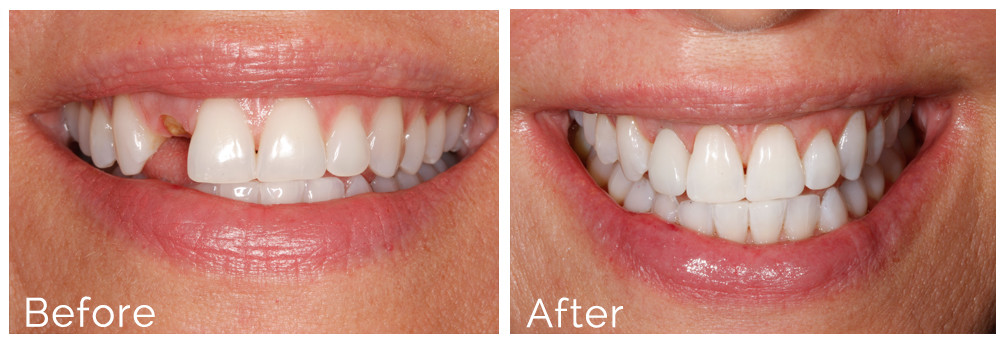The Main Principles Of Dental Sense
The Main Principles Of Dental Sense
Blog Article
Dental Sense Things To Know Before You Buy
Table of ContentsGetting The Dental Sense To WorkThe Main Principles Of Dental Sense Dental Sense Can Be Fun For AnyoneThe Greatest Guide To Dental Sense
are clinical devices operatively implanted into the jaw to bring back a person's ability to chew or their look. They give assistance for synthetic (fake) teeth, such as crowns, bridges, or dentures. When a tooth is shed due to injury or disease, a person can experience problems such as fast bone loss, malfunctioning speech, or modifications to chewing patterns that lead to discomfort.Oral dental implant systems consist of an oral implant body and oral implant joint and might also include a joint fixation screw. Professional teeth whitening. The oral implant body is surgically inserted in the jawbone in place of the tooth's origin. The oral implant joint is usually connected to the implant body by the joint addiction screw and extends via gum tissues into the mouth to support the attached fabricated teeth
(http://www.place123.net/place/dental-sense-miami-united-states)Structure of The Dental Implant System choosing oral implants, talk with your dental supplier about the potential benefits and risks, and whether you are a candidate for the treatment. Things to consider: Your overall wellness is a crucial consider determining whether you are a good candidate for dental implants, exactly how long it will certainly require to recover, and the length of time the implant may remain in area.
Smoking might affect the healing process and lower the long-lasting success of the implant. The recovery procedure for the implant body may take several months or longer, during which time you normally have a short-term joint in place of the tooth. the dental implant treatment: Carefully adhere to the dental health guidelines provided to you by your dental supplier.
Dental Sense Can Be Fun For Everyone
Implant failing can result in the requirement for one more medical procedure to take care of or replace the implant system. Restores the capability to chew Restores aesthetic appearance Helps keep the jawbone from diminishing due to bone loss Protects the health of the bordering bone and periodontals Assists maintain nearby (close-by) teeth secure Boosts lifestyle Damages to surrounding all-natural teeth during implant positioning Injury to the surrounding tissues during surgical procedure, such as sinus perforation Injury throughout surgical procedure (as an example, crack of surrounding jawbone) Poor function, such as seeming like the teeth do not attack with each other normally An experience that the tooth is loosened or turning in area arising from a joint screw loosening up Implant body failing (looseness of the implant body) due to systemic infection, which may be most likely in people with uncontrolled diabetes as a result of neighborhood infection in bone and gums supporting the dental implant body due to delayed recovery, which may be more probable in people that smoke Problem cleaning up the click now periodontals around the implant, leading to inadequate dental health Neglected periodontal condition Post-surgical numbness as a result of nerve impingement or damages Constantly alert wellness care companies and imaging service technicians that you have oral implants prior to any magnetic vibration imaging (MRI) or x-ray treatments.
FDA is not conscious of any negative events reported for MRI or x-ray procedures with dental implants. Dental implants systems are normally made of products that follow international agreement criteria of the International Organization for Standardization (ISO) or ASTM International. These criteria have details of what makes a safe material.

An oral implant is a framework that replaces a missing out on tooth. With screw-like gadgets, the specialist inserts a dental implant into the jawbone, and it works as an anchor for a man-made tooth, called a crown. A tool called a joint connects the synthetic tooth to the dental implant. The crown is custom-made to fit the person's mouth and match the color of their teeth.
Dental Sense Things To Know Before You Buy
Some individuals are not eligible for dental implant surgical procedure. It is for oral cosmetic surgeons to operate on individuals with: acute illnessuncontrollable metabolic diseasebone or soft cells illness or infectionIf these issues are solved, an individual can have the surgery. In, dental surgeons refrain from operating on individuals with: If people with any one of the above go through dental implant surgical procedure, there is a greater risk of the implant stopping working.

Oral dental implant surgery is an individualized process. Provide you time to recover. Affix the post and final crown, bridge or denture.
Next, your surgeon will meticulously put the dental implant into your jaw. Ultimately, your doctor will reposition your gums and shut the cut with stitches. If your dental implant is near the front of your mouth, your dental expert will certainly make a temporary tooth for you to use up until you recover. This way, you will not have a space in your smile while you recuperate.
Top Guidelines Of Dental Sense
Your supplier can inform you what to expect in your circumstance. During the recovery phase, your jawbone must fuse to the dental implant. This procedure, called osseointegration, is vital for stability and lasting success. This process can take anywhere from 3 to nine months. In some instances, it may take longer.
As soon as your implant heals, your dentist can connect the abutment (tiny port message) and your final restoration (crown, bridge or denture). This typically takes about one hour to complete and might call for a second minor surgical treatment. You shouldn't really feel any pain throughout your oral implant procedure due to the fact that your service provider will certainly utilize drug to numb your gum tissues.
Report this page